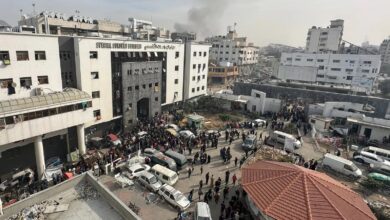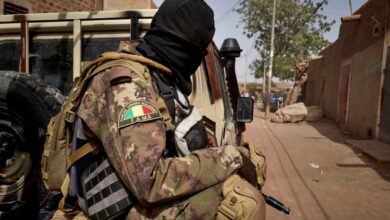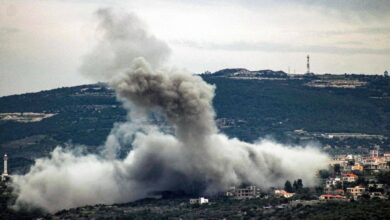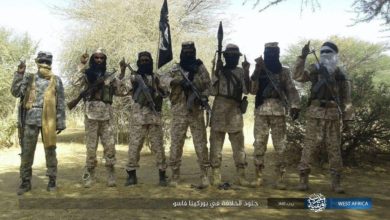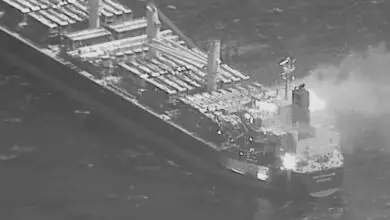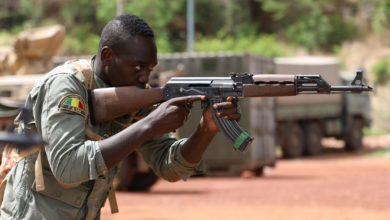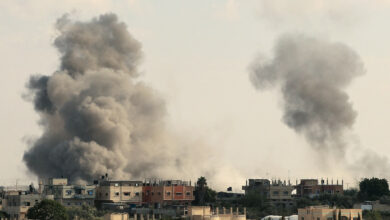Mali: Dozens killed in Dogon villages near Burkina Faso border
Thirty-eight people were killed and many others wounded in attacks on two ethnic Dogon villages in Mopti region of central Mali, the government said on Tuesday, in the latest in a cycle of violence in the volatile Sahel country.
No group immediately claimed responsibility for the attacks carried out on Monday, June 17, but Mali has this year seen a spate of inter-ethnic violence between Dogon and Fulani communities.
“The terrorist attacks on Monday evening targeted the villages of Gangafani and Yoro … not far from the border with Burkina Faso. The official provisional toll is 38 dead and numerous people wounded,” the Malian government said in a statement.
“Defense and security forces have been dispatched to the location to protect the population and their property and to track down the assailants of these attacks,” the statement added, revising upwards an earlier toll of 14 dead.
Goundjou Poudiougou, a local community official, said around a dozen bodies had been counted in both villages.
“They are terrorists because they killed and then disembowelled some bodies and burned crops,” Poudiougou said.
Earlier this month, 35 people were killed in another Dogon village, Sobane Da, stirring fears of tit-for-tat attacks in a region with an ethnic patchwork.
“This time is the same as Sobane Da: People and animals targeted,” said Adama Dionko, a spokesperson for Mali’s Dogon association.
“We demand the state give us more security.”
Cycle of Dogon-Fulani violence
President Ibrahim Boubacar Keita appealed for an end to the revenge attacks after he visited the site of the Sobane Da massacre.
That followed this year’s bloodiest incident in March, when 160 Fulani were killed in an attack on Ogossagou village which was blamed on Dogon militiamen and traditional hunters.
In the wake of the Ogassagou massacre, the government of Mali dissolved the Dogon “self-defense movement” Dan Nan Ambassagou and replaced senior military officers, but after two weeks of mass protests over the handling of violence in the center of the country, Mali’s then prime minister was forced to resign along with his government on April 18.
The United Nations peacekeeping mission in Mali, MINUSMA, said in May it had recorded nearly 500 deaths in attacks on Fulanis in the central regions of Mopti and Segou since January 2018.
Armed Fulanis caused 63 deaths among civilians in the Mopti region over the same period, it said.
The Fulani have repeatedly called for more protection from the authorities. The government in Bamako has denied their accusations that it turns a blind eye to – or even encourages – Dogon attacks on the Fulani.
The Fulani are primarily nomadic cattle breeders and traders, while the Bambara and Dogon ethic groups are traditionally farmers, and there have been repeated clashes between the ethnic groups. While local attacks are fuelled by accusations of cattle grazing on Dogon land as well as disputes over access to land and water, the area is also troubled by jihadist influence.
In the past four years, jihadist militants have emerged as a threat in central Mali, and a group led by radical Islamist preacher Amadou Kouffa has recruited mainly from the Muslim Fulani community.
Kouffa’s group – Katibat Macina or the Macina Liberation Front – is an affiliate of Ansar Dine. It became part of the Support Group for Islam and Muslims (JNIM) in March 2017, when several smaller groups including the Sahara branch of Al-Qaeda in the Islamic Maghreb, Ansar Dine and Al-Mourabitoun merged. JNIM’s leadership has pledged allegiance to Al-Qaeda leader Ayman al-Zawahiri.
In January, Dogon hunters were blamed for the killing of 37 people in Koulogon, another Fulani village.
A complex security situation
Once considered a beacon of democracy and stability in Africa, Mali in recent years has been dogged by a coup, civil war and Islamist terrorism.
The recent unrest in the Sahel began in Mali in 2012 with Tuareg separatist uprising against the state, which was exploited by Islamist extremists linked to al-Qaeda who took key cities in the desert north.
France began its Operation Serval military intervention in its former colony early the next year, driving the jihadists from the towns, but the militant groups morphed into more nimble formations operating in rural areas, sometimes winning over local populations by providing basic services and protection from bandits.
The insurgency has gradually spread to central and southern regions of Mali, and across the borders into neighboring Burkina Faso and Niger.
Large swathes of the country remain outside government control, despite the 2015 peace accord designed to isolate the Islamists.
The French mission evolved in August 2014 into the current 4,500-strong Operation Barkhane, which has a mandate for counter-terrorism operations across the Sahel, including 2,700 soldiers in Mali to support poorly-equipped local military forces.
Troops deployed to Barkhane work alongside other international operations, including the roughly 14,700-strong MINUSMA mission, and the regional G5 Sahel joint counter-terrorism force that aims to train and deploy up to 5,000 personnel.
UN report calls for maintaining Mali mission, bolstering Mopti deployment


